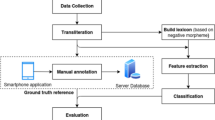Abstract
With the growth of the internet, more and more digital content gives rise to each day, resulting in an ‘age of data’. It brings a trend for reading online news from various digitally available newspapers. Positive news spread positivity, and negative news spread negativity to our minds and our society. Since the last few decades, sentiment analysis has become a fascinating and salient area for researchers in natural language processing to understand the sentiment of the news. Therefore, it becomes necessary to classify into positive and negative polarity to measure the daily and overall news sentiment. In this paper, we aim to carry a sentiment polarity classification model by applying machine learning classifiers on low resource Assamese language using lexical features on the news domain. The baseline system works only with a bag of words without any feature-based polarity. But, our proposed model uses lexical features like adjectives, adverbs, and verbs. The proposed model has shown improvement over our baseline model in terms of F1-score on the standard data set.
Access this chapter
Tax calculation will be finalised at checkout
Purchases are for personal use only
Similar content being viewed by others
References
Das A, Bandyopadhyay S (2010) Opinion-polarity identification in bengali. In: International conference on computer processing of oriental languages, pp 169–182
Das A, Bandyopadhyay S (2011) Dr sentiment knows everything! In: Proceedings of the 49th annual meeting of the association for computational linguistics: human language technologies: systems demonstrations. Association for computational linguistics, pp 50–55
Gautam G, Yadav D (2014) Sentiment analysis of twitter data using machine learning approaches and semantic analysis. In: 2014 seventh international conference on contemporary computing (IC3). IEEE, pp 437–442
Gogoi M, Sarma S (2015) Document classification of assamese text using naïve bayes approach. Int J Comput Trends Technol 30:182–186. https://doi.org/10.14445/22312803/IJCTT-V30P132
Hu M, Liu B (2004) Mining opinion features in customer reviews. AAAI 4:755–760
Kaur G, Kaur K (2015) Sentiment analysis on punjabi news articles using svm. Int J Sci Res 6(8):414–421
Kim SM, Hovy E (2004) Determining the sentiment of opinions. In: Proceedings of the 20th international conference on Computational Linguistics. Association for Computational Linguistics, p 1367
Liu B, Dai Y, Li X, Lee WS, Yu PS (2003) Building text classifiers using positive and unlabeled examples. In: Third IEEE international conference on data mining. IEEE, pp 179–186
Neethu M, Rajasree R (2013) Sentiment analysis in twitter using machine learning techniques. In: 2013 fourth international conference on computing, communications and networking technologies (ICCCNT). IEEE, pp 1–5
Pang B, Lee L (2004) A sentimental education: Sentiment analysis using subjectivity summarization based on minimum cuts. In: Proceedings of the 42nd annual meeting on association for computational linguistics. Association for Computational Linguistics, p 271
Pang B, Lee L (2005) Seeing stars: exploiting class relationships for sentiment categorization with respect to rating scales. In: Proceedings of the 43rd annual meeting on association for computational linguistics. Association for Computational Linguistics, pp 115–124
Pang B, Lee L, Vaithyanathan S (2002) Thumbs up? Sentiment classification using machine learning techniques. In: Proceedings of the ACL-02 conference on Empirical methods in natural language processing, vol 10. Association for Computational Linguistics, pp 79–86
Poria S, Gelbukh A, Cambria E, Yang P, Hussain A, Durrani T (2012) Merging senticnet and wordnet-affect emotion lists for sentiment analysis. In: 2012 IEEE 11th international conference on signal processing, vol 2. IEEE, pp 1251–1255
Author information
Authors and Affiliations
Corresponding authors
Editor information
Editors and Affiliations
Rights and permissions
Copyright information
© 2021 The Author(s), under exclusive license to Springer Nature Singapore Pte Ltd.
About this paper
Cite this paper
Das, R., Singh, T.D. (2021). A Step Towards Sentiment Analysis of Assamese News Articles Using Lexical Features. In: Maji, A.K., Saha, G., Das, S., Basu, S., Tavares, J.M.R.S. (eds) Proceedings of the International Conference on Computing and Communication Systems. Lecture Notes in Networks and Systems, vol 170. Springer, Singapore. https://doi.org/10.1007/978-981-33-4084-8_2
Download citation
DOI: https://doi.org/10.1007/978-981-33-4084-8_2
Published:
Publisher Name: Springer, Singapore
Print ISBN: 978-981-33-4083-1
Online ISBN: 978-981-33-4084-8
eBook Packages: Intelligent Technologies and RoboticsIntelligent Technologies and Robotics (R0)




